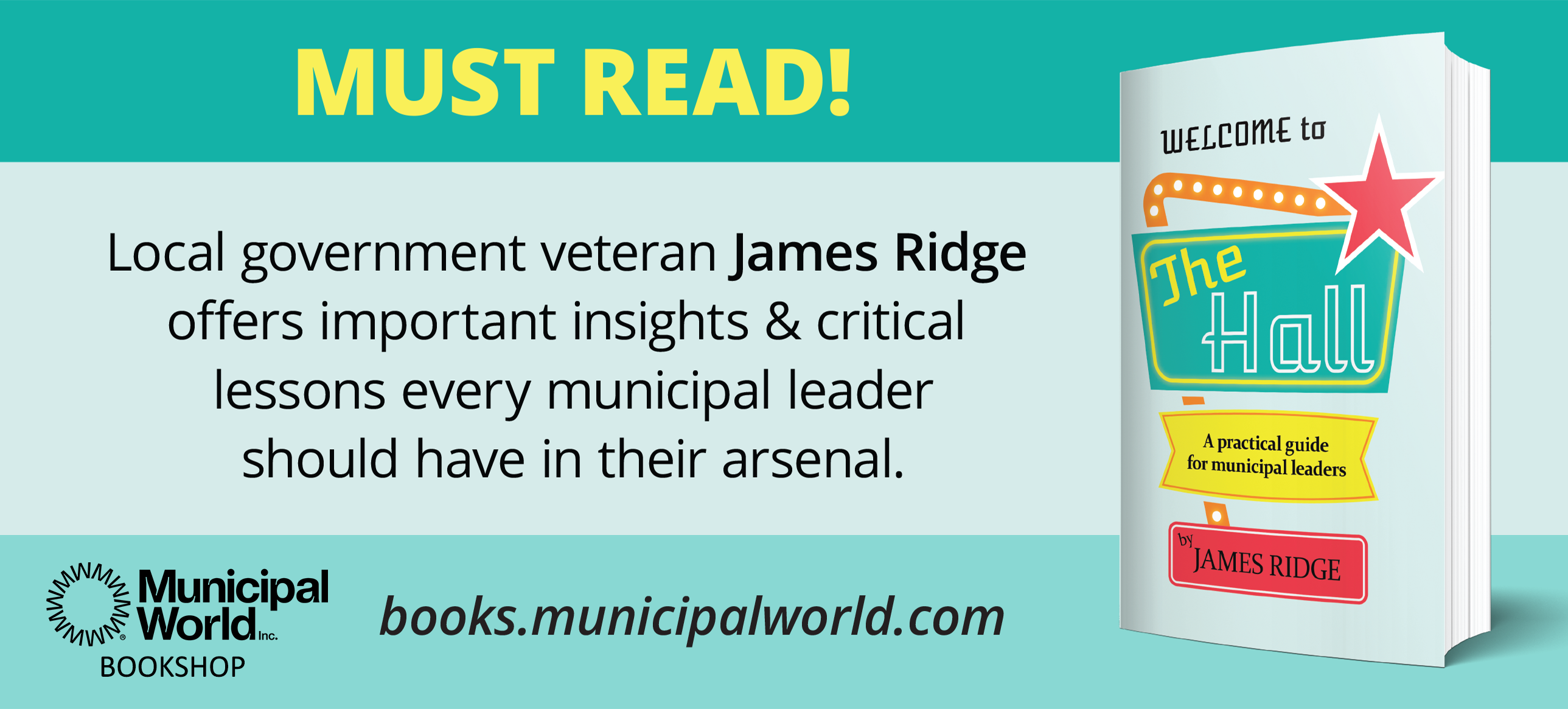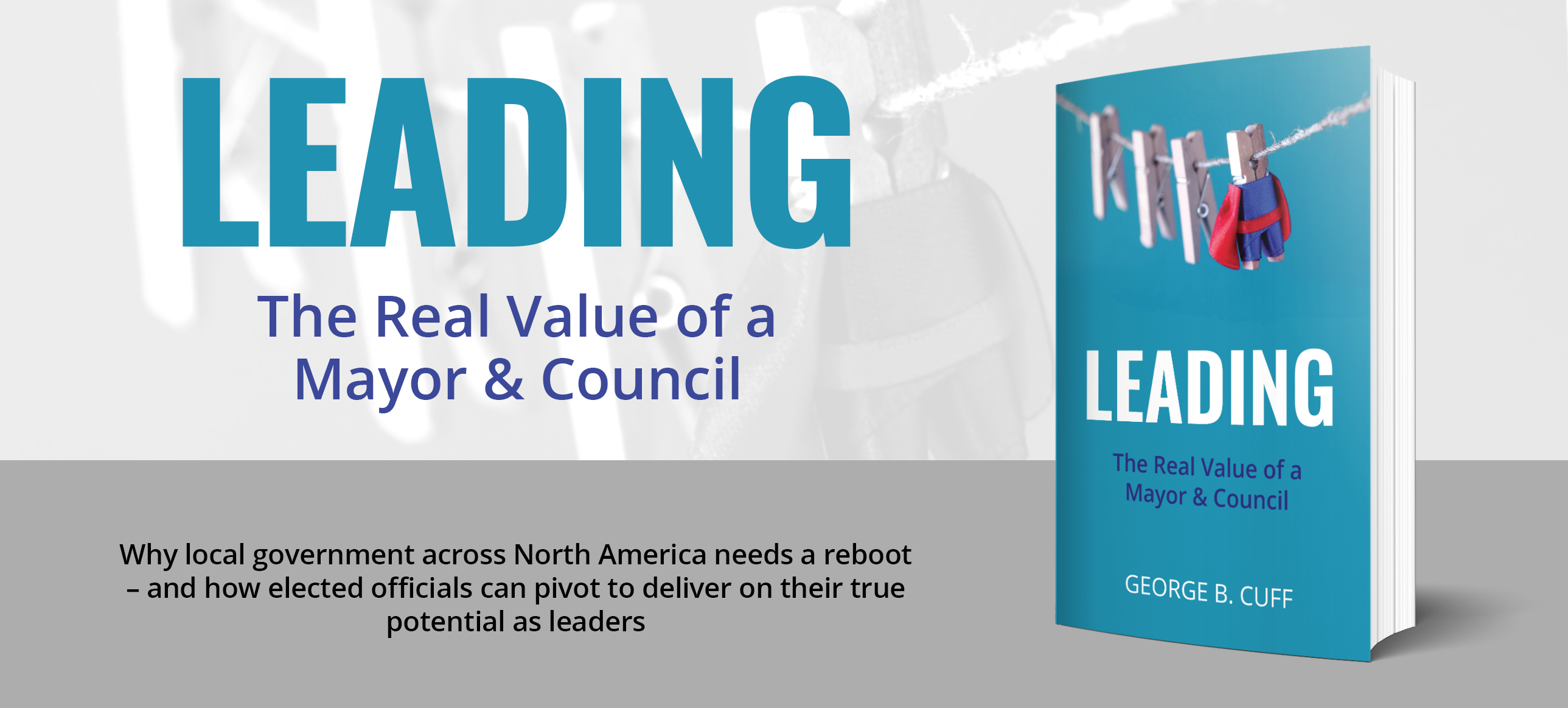Escape isn't an answer to recovery
 Recovery is found in local government: It is clear that recovery will happen in our local communities. We now need all hands on deck, region by region, to be part of this recovery.
Recovery is found in local government: It is clear that recovery will happen in our local communities. We now need all hands on deck, region by region, to be part of this recovery.
Will Canadians (and municipalities) view their regions differently after COVID-19?
In The Decameron, written by Italian author Giovanni Boccaccio, seven women and three men moved out of Florence during the time of the Black Death. They were trying to escape the plague by moving to a deserted villa in the countryside for two weeks.
While there is much more to this story than simply 10 people escaping the plague-ridden metropolis, the story tells that those who could afford to flee the pandemic did so at that time.
Move to Escape
More recently, during the COVID-19 outbreak, many city-dwelling New Yorkers moved out of their cities and headed to short-term rentals, to Air B&Bs, and to remote villages. While there are few hospitals, grocery stores, or other infrastructure to support these new residents, other amenities are available, especially a valued amenity called “no people”! Many New Yorkers remain in these rural towns and villages today.
The reasons to get out of the city are perhaps straightforward.
Social or physical distancing in Montreal, New York, Milan, or Paris may mean committing to weeks or months inside an apartment of a few hundred square feet, with the knowledge that a global pandemic is just beyond the front door. Heading for the hills, meanwhile, could mean peace and quiet, outside spaces, and the opportunity to opt out of the city’s risks by being in the country.
This was the case with the wealthy Europeans during the Renaissance. It has repeated itself in other pandemics, and it is now the case in 2020. People do not move far though; they stay within their close-by region, not too far from their main home.
Stay-Close-to-Home Behaviour
A question that this raises is: “Will Canadians (and municipalities) now view their regions differently than before the pandemic, because of the pandemic?”
This regional question matters because we are a very mobile society. Where we shop, dine, educate, and recreate is far closer to home since the pandemic began than it was before the lockdown.
For the first 100 years after confederation, Canadians were loyal to their close-by communities, but once highways became safer and quicker to drive upon, Canadians ventured further and soon became more regional in their movement patterns.
In recent years, Canadians have traveled outside their local towns and to far beyond their close-by region for many reasons; something that Canadians did very little of a few decades ago.
Some of that “stay-close-to-home” behaviour has now returned. We are currently staying closer to our home communities, closer to our bubbles, and there are now some new factors that could become a growing trend into the years ahead.
Four Opportunities to Rebuild Municipal Finances
While The Decameron scenario will likely not repeat itself to a large extent in 2020, it provides a glimpse into how it can affect the movement of people. And there will likely be some impact regionally from this pandemic.
While municipal councils across Canada grapple with a new financial reality caused by COVID-19, “regional” officials from all orders of government now have new opportunities to help rebuild their relationship as legitimate partners with each other, thereby assisting in the rebuild of Canada.
The provinces could become stronger partners with municipalities if they choose to. Provincial governments, and to some degree the federal government, could use this opportunity to change the financial arrangements that they have with municipal governments.
1. Rebuild the tax revenue method
As an example, the traditional method of how tax revenue is shared among all orders of government could now be restructured. The current strategy, seen by many as outdated, has been in place for decades, and could now be changed.
This need for change has existed for years, with services having been downloaded and side loaded from the federal and provincial governments onto municipal governments for a long time. Many other financial models that have regions more at the forefront could be explored and implemented to assist all orders of government. This opportunity was brought on by the pandemic.
Yes, there are various and unique models in place throughout North America. Revenue sharing models by some allow solutions to be linked more to regional economies. Coors Field in Colorado, for example, was funded using a particularly unique model of regional revenue sharing.
There are many other examples of instruments, tools, and formulae that could be put in place that assists and rewards regions that collaborate, while still keeping local municipal autonomy intact.
Without a new arrangement, local politicians across Canada will simply continue with the same financial models and challenges that are now made worse by the pandemic.
2. Address financial disparity between municipalities
Another matter that is impacting municipal financial challenges brought on by the pandemic is financial disparity between the types of municipalities.
Because of their limited financial diversity, villages and small towns will now seek a higher reliance on their neighbours and on other orders of government. They will rely more on their region, plus rely more on their immediate neighbours, to share the burden of tax pressures and economic recovery.
Meanwhile, regions will be called upon to fill the void and share in the growth that individual municipalities cannot provide alone.
Few elected leaders seem to be discussing the potential of the regional opportunities. And while significant transformation may not actually occur at this time with the federal-provincial-municipal financial arrangements, a transformation of regional functionality could take place across Canada if all orders of government stepped up and simply did it.
Regions have power, strength, and diversification. Regions meet rural and urban needs, and have more recreational amenities than any individual municipality has. Most individual municipalities do not have enough diversity (diversity of all sorts), and the smaller the municipality, the more difficult the struggle will be during the economic and financial recovery from the pandemic.
While there are many examples of regional opportunity, one of the trends that is truly regional is the “Internet of Things” (IoT).
3. Drive economic recovery: Broadband and Internet of Things
IoT is driven by 5G (5th generation) technology, which is the latest iteration of wireless capabilities. 5G provides faster and broader bandwidth than 4G, and 5G will replace that last “mile” of physical connection with wireless capabilities.
Such technical trends, plus broadband capacity, are clear examples that could be regional drivers in economic recovery.
Broadband capacity is a good example of infrastructure that can only be put in place on a large scale or on a region-by-region basis.
Imagine if such capability were to be in place in every corner of every province and territory in Canada. The economic potential of this technology alone remains untapped. Virtual meetings, communication, exploration, and keeping communities thriving on a region-by-region basis is now a possibility.
All of this is possible and could assist us in living a newly transformed lifestyle that will evolve because of COVID. Such implementation could assist with work-life balance, “smart” electronics, online service provision, online education, online commerce, and more.
4. Improve education and health care capacities
But, a broadband initiative is only one example of many regional initiatives that could assist with economic recovery and diversification. Short-term economic recovery and long-term financial health could be the product of regional efforts.
If the provincial and federal governments were to provide regional stimulus funds that would focus on “smarter governments and smarter communities,” this could result in improved education and health care capacities.
Senior orders of government could invest in pharmaceutical innovation for the purpose of coordinating a network of regional labs, manufacturers, and suppliers to produce drugs that are the highest priority for various regions and health care providers.
Reliance on foreign supply was noted as an issue by Canadians during the pandemic. But municipalities cannot go it alone, yet regions can, with all orders of government collaborating.
Regions can and should flex their muscles. They should act like a group of municipalities – “hunting in packs” and not competing with each other. The senior orders of government could incent regions to lead such transformation.
The former US Defense Secretary, Donald Rumsfeld, once stated: “There are known-unknowns. That is to say, there are things we know we don’t know. But there are also unknown-unknowns. There are things we don’t know we don’t know.”
Such is the case with the fallout of the pandemic. And, while health care and broadband may only be a couple of examples cited here, there are so many more that one could consider.
Tourism, economic development, housing, homelessness, libraries, schools, and recreation are just some of the areas where municipalities cannot easily lead the recovery effort alone while regions can. Regional food supply and agricultural strategies are further examples that can only be coordinated on a regional basis.
All Hands on Deck for Local Recovery
It is clear that recovery will happen in our local communities. Whether it be manufacturers re-opening, retailers expanding, restaurants finding new ways to flourish, or the service economy re-igniting, there is one thing that is common in all of these. They are all located in municipalities.
The second thing that is common is that they are all located in regions; regions that will rely on their neighbours more than ever before to succeed.
If all orders of government recognize such opportunity, and if regions are provided financial incentives and governance leadership, the recovery could be profound.
What we do not need are families “heading for the hills,” unwilling to be part of the solution. While some families escaped during the plague, we now need all hands on deck, region by region, to be part of this recovery. MW
✯ Municipal World Insider and Executive Members: You might also be interested in Mark Mullaly’s article: Learning to let go: How COVID-19 has highlighted municipal capacity for reinvention. Note that you can now access the complete collection of past articles (and more) from your membership dashboard.
Nolan Crouse, MBA, CCMPTM, served 13 years on St. Albert city council (10 as mayor), as well 5.5 years as Edmonton Metropolitan Region Board Chair. Nolan teaches regional planning at the University of Alberta’s School of Urban and Regional Planning.
Related resource materials:



